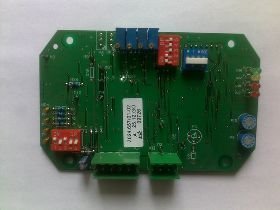
The application range of connectors is very wide, the focus of this manual
will be on electrical connectors, which are mainly used in 3C products. From
this emphasis, the functional definition of an electrical connector can be
proposed as:
An electrical connector is an electromechanical system that provides a
separable interface for connecting two secondary electronic systems without
unacceptably affecting the operation of the system.
The key words in the definition are "motor system", "separable" and
"unacceptable action".
The connector is an electromechanical system because it is an electrical
connection made by mechanical means. As will be discussed, the deflection of the
mechanical spring creates a force between the mating parts, which results in
metallic contact between the mating surfaces of the interface. The reason the
application connector is in the first place is the separability of the mating
interface. Separability is desirable for many reasons. It allows parts or
sub-systems to be manufactured independently and final assembly to take place in
one main location. Separability can also allow maintenance or upgrades of parts
or subsystems without modifying the entire system. Another reason for
separability is portability and support for expansion of peripherals.
On the other hand, separability in the definition introduces an additional
interface between subsystems, which cannot introduce any "unacceptable effects",
especially in the properties of the system that cannot be affected by
telecommunications, such as Unacceptable distortion and signal degradation
between systems, or power loss through connectors, measured in millivolt losses,
will become the main design criteria for functionality, and therefore the power
requirements of the motherboard will increase.
The requirements for separability and the limits of "unacceptability"
depend on the application of the connector. Separability includes the number of
mating cycles, which is the force a connector must provide without affecting its
performance, and the force necessary to mate with another connector. Typical
mating cycle requirements range from tens of cycles for internal connectors to
thousands of cycles for peripheral devices, such as PCMCIA style connectors. As
the number of circuits or functions and the interconnection of connectors
increases, the need for mating force becomes even more important. To provide
more functionality, the location of the terminals on the connector must also be
increased, resulting in higher connector mating forces. Depending on the use and
function of the connector, the number of terminals ranges from dozens to
thousands. Separability and mating force requirements will be discussed in
detail in Section 1.5.1, and the technical level of interconnection for
categorizing connectors will also be described.
We will now turn to the second method of defining connectors - structural
or design/material definitions.
Read recommendations:
Spring probe M026 2.0x9.8
M3232 1.5x8.2(1A)pogo pin socket factory
M2689 7.8x8.2(10A)Double-head Pogo Pin Wholesale
There are many doubts to pay attention to when looking for a magnetic connector manufacturer
Probe spring customization process cumbersome? How to customize